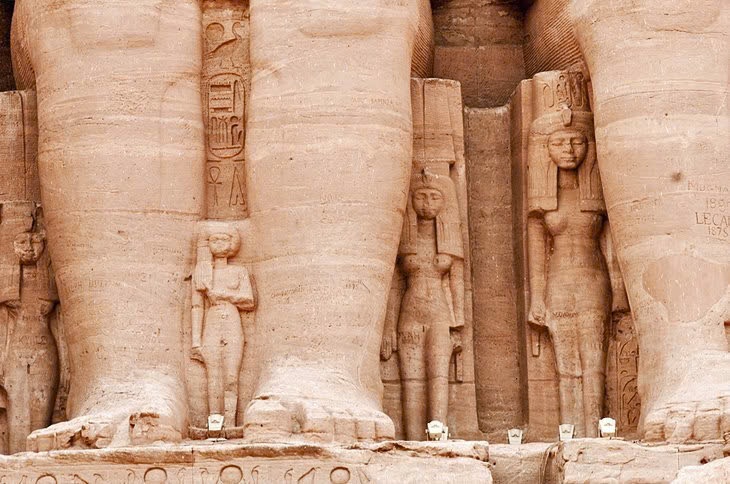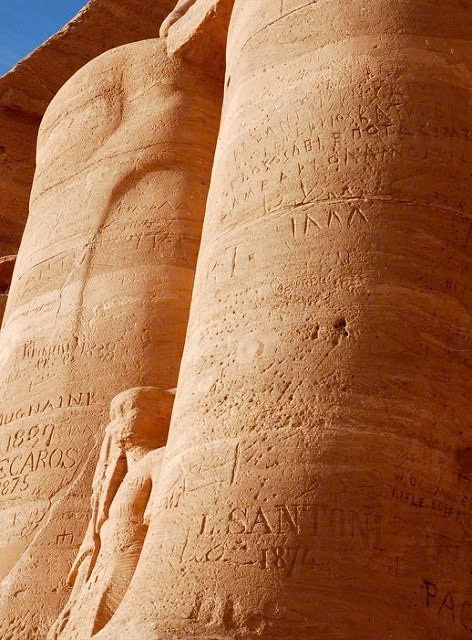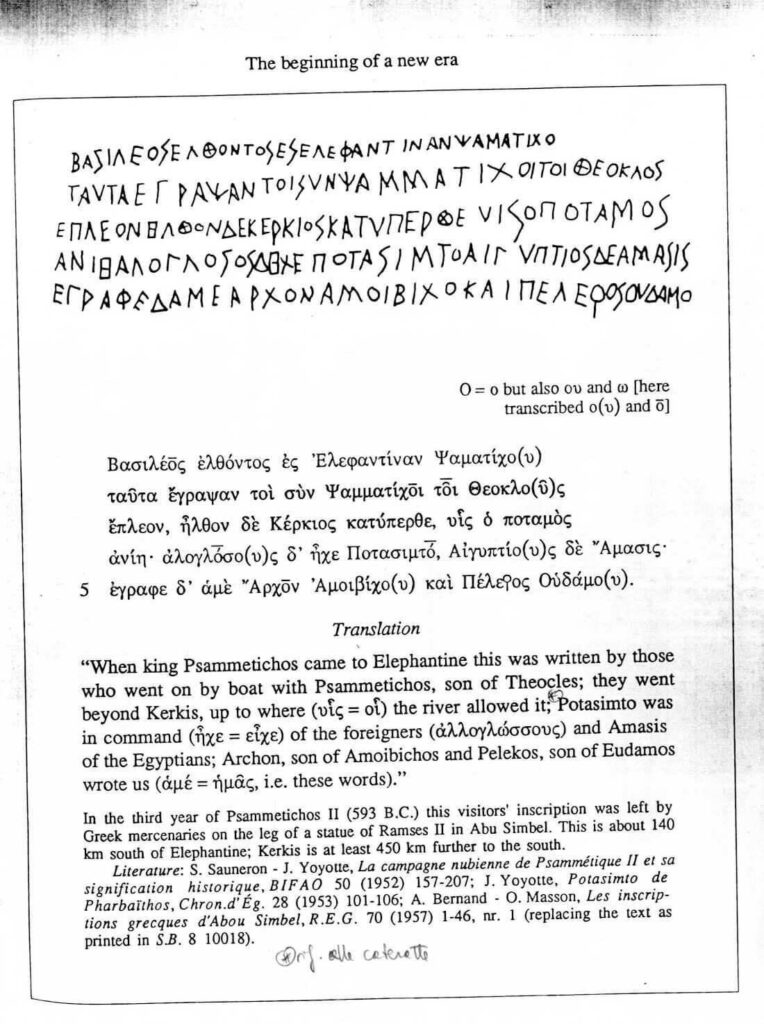The Unexpected Tale of Abu Simbel’s Greek Inscriptions

In the heart of ancient Egypt, nestled along the banks of the Nile, stands the majestic Temple of Abu Simbel. While its colossal statues of Ramses II have long captivated visitors, a lesser-known treasure lies etched into the very stone itself – ancient Greek graffiti that tells a fascinating story of cultural exchange and military alliances.
A Soldier’s Testament Carved in Stone

As you approach the temple, your eyes might be drawn to an unusual sight on the left leg of one of the massive Ramses II statues. There, carved in Greek characters, is an inscription that transports us back to 593 BC. This is no ordinary piece of vandalism, but a historical record of a military campaign led by Egyptian King Psammetichus II into Nubia.

The inscription reveals that this expedition wasn’t just an Egyptian affair. Among the pharaoh’s forces were Greek mercenaries, led by an officer named Botasimto – a name that itself tells a story of cultural blending, being a Hellenized version of the Egyptian “Ba-de-Sema-Tawy,” meaning “the gift of the two lands.”
When Two Worlds Collided
This graffiti opens a window into a pivotal time in ancient history. The late 7th and early 6th centuries BC saw Egypt, under the Saite dynasty, actively engaging with the Mediterranean world. Greek mercenaries became a common sight in Egyptian military campaigns, bringing with them not just their fighting skills, but their language, customs, and curiosity.

These Greek soldiers, far from home, left their mark not just on the battlefield but on the monuments they encountered. Their inscriptions at Abu Simbel serve as a tangible link to this era of increased contact and exchange between Egypt and Greece.
Beyond the Battlefield: A Cultural Tapestry
The story of Abu Simbel’s graffiti is more than just a military anecdote. It’s a testament to the rich tapestry of cultural exchange that characterized this period. Greek mercenaries often adopted Egyptian customs, took on Egyptian names, and participated in local religious rituals. Meanwhile, Egyptian goods and ideas flowed into the Greek world, influencing art, trade, and daily life.

From the battlefields of Nubia to the marketplaces of Greek city-states, the interaction between these two great civilizations was reshaping the ancient Mediterranean world. Egyptian amulets found their way to Greek homes, while Greek pottery became prized possessions in Egypt.
A Timeless Human Impulse
As we stand before the temple today, reading the words left by those Greek soldiers over two and a half millennia ago, we’re reminded of a fundamental human desire – the urge to leave our mark, to be remembered. What these soldiers might have seen as a simple act of recording their presence has become, for us, a priceless historical document.

The graffiti at Abu Simbel reminds us that history isn’t just about grand monuments and royal decrees. Sometimes, it’s in the small, personal acts – like a soldier carving his name into a statue – that we find the most vivid connections to the past.
In these ancient inscriptions, we see not just the story of a military campaign, but a snapshot of a world in transition, where cultures met, mingled, and left indelible marks on each other. It’s a powerful reminder of the interconnectedness of our human story, echoing across the millennia from the sun-baked stones of Abu Simbel.
